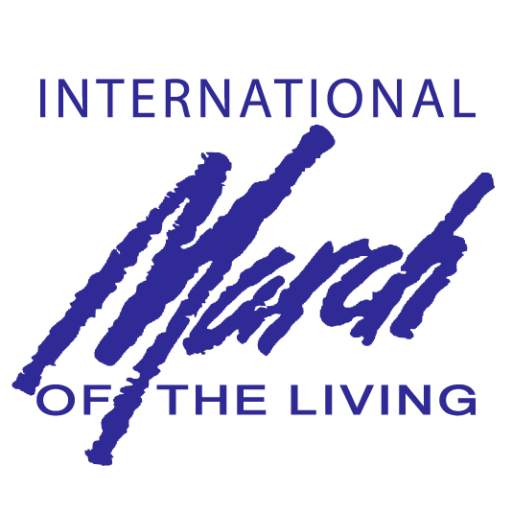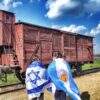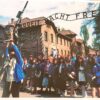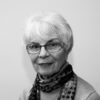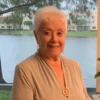-
Soul to Sole Campaign – The Stories Behind the Shoes
“If you had a pair of shoes in the concentration camps, you had the chance to survive. You had a place to…
Continue reading -
Kol Nidre in Auschwitz
Holocaust survivor Judy Weissenberg Cohen’s Story about Yom Kippur at Auschwitz in 1944 Practicing Judaism or celebrating any Jewish Holiday was totally forbidden by the Nazis….
Continue reading -
Out of 185 orphans who were deported from the Lodz ghetto orphanage to Auschwitz just a handful survived. Arek Hersh was one of them.
In the memory of Arek’s friends, The International March of the Living is asking the world to join the campaign to preserve and save 8,000 children’s shoes that still…
Continue reading -
I will never forget the moment I found shoes in Auschwitz. We must preserve the children’s shoes.
Holocaust survivor Paula Lebovics asks the world to join the campaign to preserve and save 8,000 children’s shoes that still remain in Auschwitz By Monise Neumann
Continue reading -
“Auschwitz was the end of my family. Still today, when I close my eyes, I see the chimneys”.
Holocaust survivor Nate Leipciger asks the world to join the campaign to preserve and save 8,000 children’s shoes that still remain in Auschwitz By Eli Rubenstein
Continue reading -
“When I arrived in Auschwitz, I was entirely on my own.”
Holocaust survivor Sidonia Lax, A-14821, asks the world to join the campaign to preserve and save 8,000 children’s shoes that still remain in Auschwitz By Monise Neumann
Continue reading -
Holocaust survivor Renee Salt was born in Poland in 1929. She arrived at Auschwitz at the age of 15. These are her memories:
“I arrived at Auschwitz in cattle trucks, the doors were slammed shut and bolted and we were left without any food,…
Continue reading -
New Film: ‘Three Minutes: A Lengthening’
The International March of the Living is proud to be a sponsor of various virtual and in-person film screenings and LIVE Q&A with Bianca Stigter, Director of the new, award-winning documentary about the Holocaust ‘Three Minutes – A Lengthening’. On Monday, August 15, 2022, we hosted an interview with Bianca on Zoom, in advance of the film’s premiere on August 19th. The program was moderated by Jon Kean. Click on the video player to watch the recording. For information about all upcoming theatrical cities, please visit www.threeminutesfilm.com. Three minutes of home movie footage, mostly in color, shot by David Kurtz in 1938, are the only known moving images left of the Jewish inhabitants of Nasielsk, Poland, before the Holocaust. Those precious minutes are examined in intricate detail to unravel the human stories hidden in the celluloid. Tracing the story of those three minutes begins with the journey of Glenn Kurtz to discover more about his grandfather’s film, ultimately leading to identifying people and places otherwise erased from history, and helping to connect a Holocaust Survivor with his lost childhood. Co-Produced by Steve McQueen (Director, 12 Years a Slave. Narrated by Helena Bonham Carter.The original footage was restored and archived at the US Holocaust Memorial Museum – Three Minutes Archival Film Footage.World Premiere at the Venice Film Festival followed by Telluride, Toronto and Sundance. Winner of the 2022 DocAviv inaugural Yad Vashem Award, the Brussels International Film Festival European Young Jury Award and a Special Mention, the Atlanta Jewish Film Festival Jury Award for Best Doc, and Virgin Dublin International Film Festival Award for Best Doc. Follow the film on Facebook here.For questions about the film, please email Tamar Simon at Mean Streets Management or 917-670-6824.
Continue reading -
Remembering Irene Mermelstein Z”L
International March of the Living mourns the passing of Irene Hershkowitz Mermelstein Z”L, a Holocaust survivor who participated in several March…
Continue reading -
Survivor Story: Halina Wachtel
International March of the Living interview with Holocaust Survivor Halina Wachtel of Los Angeles, California. Click on the questions below to read the answers Name, birth date, place of birth, family background before and after the Holocaust: Halina’s birth name was Chayele Szuldenrein and she was born on October 22, 1925 into a large Hasidic family in Warsaw. She had three brothers, Kalman, Symcha, and Meyer, and two sisters, Gutta and Minia. Her father died from tuberculosis when she was young and her mother, Sura Rivka Manne worked in the family’s very successful kosher wine business. Halina grew up very sheltered- attending Jewish day school for girls and speaking Yiddish and Polish at home. She spent her summers with her extended family in a town called Otwock where her mother had a subscription to the local library- ensuring her children learned to love to read. Please tell us your Holocaust story briefly, and please indicate in which ghettos, camps, forests, hiding places or other locations you were in during the war: Halina’s family was in Otwock when the Germans invaded Poland on Sept. 1, 1939. When they returned to Warsaw, they saw that the apartment in Warsaw was bombed at this time, but still somewhat liveable so they remained in it for a while. However, they ran out of food so Halina’s mother sent 4 of her children to someone she knew in Wegrow, a town outside of Warsaw. They escaped the ghetto by running through the Jewish cemetery. Halina came back to the ghetto when her head lice became more of an issue for the family. She escaped a second time from the ghetto when they were rounding up Jews to Treblinka, by pretending to be a Catholic accompanying her cousin who was dressed up as a Catholic girl in mourning wearing a black veil. She returned to Wegrow, but the Nazis were already rounding up the Jews.Her sister Minia was able to buy false papers from a farmer and she became Halina Chromin. Together with her sister and two other girls they returned to Warsaw, but were arrested because they thought the girls were prostitutes. She and one of the other girls were sent to work as young Polish Catholics to Gera, Germany in a labor camp factory. She survived the war and was reunited with her sister Minia, but the rest of the family was murdered, but Halina has no idea where.She came to the USA- married a fellow Holocaust survivor and had two children. She never told them her story for many years. The arrival of the Germans to your city/village She was in Otwock when they arrived initially. When she got back to Warsaw – their apartment was bombed and they lived in complete fear and trepidation. What were some of the first legal restrictions you were subjected to? They could not go to school and the whole area that they lived in was turned into a ghetto with no access to food. The response of your neighbors to your plight Halina remembers running through the cemetery to escape the ghetto and when they cloned over the outer fence – they were chased by Polish children who yelled “Jews” at them until we were able to disappear from their site The separation from your family Separation from her family was horrendous because she did not know what happened to them. She was sent ultimately to a German labor camp with one other girl, but had no connection to anyone in her family or knowledge if they were safe and alive. What was the hardest thing you can remember Having lived a very sheltered life as a Hasidic child, she had no idea how to deal with the outside world The first time you encountered death Watching her cousin being shot by the Nazis for wanting a piece of bread The most human and inhuman moments you remember from the Shoah The bravery of the Jewish policeman who risked his own life by letting Halina and her cousin escape the ghetto dressed as Catholic children. A moment of hope – ray of light Living in the German labor camp – food was so scarce. Some of the girls worked in a marmalade factory and smuggle marmalade back to the camp. This little bit of sweetness was the greatest treat in the world. What does the March of the Living mean to you and why do you think it is important? Why did you decide to participate? I never told my story for many, many years I came back to Poland on the BJE LA March of the Living and the young people I met listened attentively to my stories about my wartime experience. I was rewarded over and over again by their curiosity, their compassion, and their genuine desire to learn about me, my family, and all the other survivors who traveled with us.They all keep me young! Please share a special moment that you remember from the March/s The connection I made with the teens. Many years after the trip, I attended the wedding of one of the participants. What is your message to the younger generations, the generation of your grandchildren and great-grandchildren? Never forget where we came from and what we experienced, so you can march forward with knowledge and pride and commitment to honor memory Are you worried by the never-ending antisemitism? Do you think the age-old hatred of the Jews will ever cease? What about racism in general Nothing made sense to me during the Holocaust, but regardless of this fact- the antisemitism was real and is real today and I don’t think this hatred will ever cease. Holocaust denial is growing rapidly. How concerned are you for the preservation of Holocaust memory in the future? Very concerned. I had to hide my Jewishness during the war and we should never have to do that again. The next generation and the generations after have to speak up and share my story and that of my family. What is your message to the world about Holocaust denial? I never shared wartime memories with my own children, because I did not want them to feel burdened, but now I know that we cannot allow the deniers to rewrite history. Both my children have come with me on the March so they could see firsthand the atrocities and see what I experienced and what other experienced – so they can become spokespeople along with the teens on MOTL.
Continue reading
